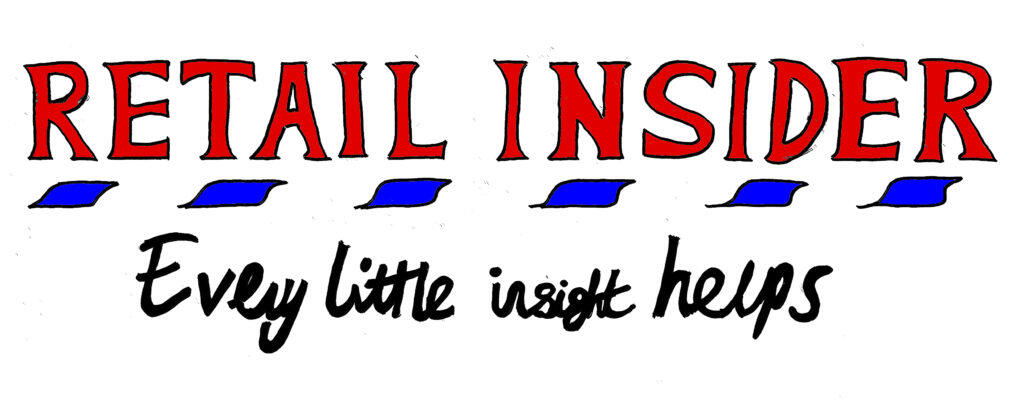Sustainability focus: DS Smith
Welcome to our section of the site which focuses on the sustainable side of retail. It’s exciting times for anyone involved in this area as technology and retailers try to keep up with customers’ demand for all things ethical. From palm oil to fur farms, fast fashion to one-use plastic, excess packaging to food waste – this is where the real action is.
It is often forgotten that the packaging a company decides to use is at the heart of its sustainability ethos. It is after all no good having the greenest product available if the consumer’s very first impression is of endless delivery plastic and unrecyclable boxes. Retail Insider recently interviewed Teresa Del Re, head of marketing for Northern Europe at British-based international packaging and recycling business DS Smith, to find out about the current trends and challenges in the world of secondary packaging.
She believes marketing is becoming ever more integral to the business as it attempts to communicate better to its retail and manufacturing customers how well-sourced packaging can aid their sustainability targets and increase sales.
Handily for the closed loop narrative DS Smith has a huge recycling division and Del Re is proud of its ‘14 day box-to-box’ offering whereby a box is created out of 100% recycled and recyclable material, sent to the business customer/retailer for onward use, retrieved from the business customer again and recycled through the paper mill to start the whole process off once more all within two weeks. It’s the kind of simple and effective message that businesses, which are increasingly setting their own corporate CSR targets, can easily pass on to their own customers.
And it does start with the end consumer, according to Del Re “We find, for example, with the offline grocery market that the second biggest concern of customers, after the quality of the food itself, is the excess plastic packaging and finding replacements for that. So most big manufacturers have a strong interest in introducing better packaging.”
To that end there are two different strands of innovation going on at DS Smith at any one time. The long-term research focus, which is “not just about the box, but way beyond the box”, while the shorter-term team look at the next one to three years and concentrate on sustainability as a design principle. Both, however, will adhere to DS Smith’s aim to be about the logistics of the whole supply chain. “Some of them are engineers and some of them are customer-facing” she explains and they produce an initial customer innovation brief to explain how and why they have come up with the innovation they have.
In May 2019 the company partnered with the Ellen McArthur Foundation to “support innovation to include projects on packaging design for a circular economy and improving collection systems in urban areas…and to build on the company’s recent efforts on recycling throw-away consumable items such as coffee cups”. A lot of the innovation work at DS Smith seeks to identify what changes in consumer behaviour means for manufacturers and retailers and then tries to solve the gaps in the most important market segments in FMCG sectors like confectionery, dairy and automotive.
According to Del Re much thought is given to just getting the right size packaging. “Empty space is linked to primary packaging and we do the secondary packaging” she explains. “so a few years ago pouches were thought of as the great discovery to gain shelf space but half of it is air so our job is to make sure that what those pouches are packed into is the best it can be”.
She finds that innovation is definitely a two-way conversation and the packaging strategists at DS Smith are often tasked with working with huge companies that can take a long time to be able to adapt to new ideas. However Del Re also points out that alongside the huge integrated sites DS Smith runs there are also much smaller ones and the company does a lot of work with start-ups that utilising these.
“We learn a lot from start-ups” she claims, “and we always want to work with the small online retailers that want to be big”. She admits though that, although part of the population is moving away from plastic, there is still a tendency for the end consumer to say one thing about packaging and to do another in practice and that it is always imperative to bear in mind that metropolitan concerns are not always reflected everywhere else.
But shoppers on the whole, she feels, are developing broadly the same way throughout Europe and becoming more sensitive to environmental concerns. Although the Nordic countries ostensibly still lead the pack, Del Re explains that in Italy for example the whole idea of plastic punnets is only a decade old. “They have always bought most of their groceries loose” so it can be counterproductive and wrong to pick out countries that are doing well and those that are not.

Made for Ted Baker’s online delivery business – a fully recyclable box with reversible sleeve to ensure easy returnability and onward reuse
And the big opportunity? “Definitely online. Packaging for the online market will get more sophisticated, will move to be much more the right size, will be traceable, will be customisable and don’t forget Instagrammable. The amount of unboxing videos on YouTube is insane!” she claims.
It’s an opportunity that DS Smith, straddling the recycling and packaging innovation sectors, seems well placed to grasp.


